Houzz TV: See Recycled Walls and Cool Cassette Art in a Woodsy DIY Home
dppre May 29, 2015
Real Estate
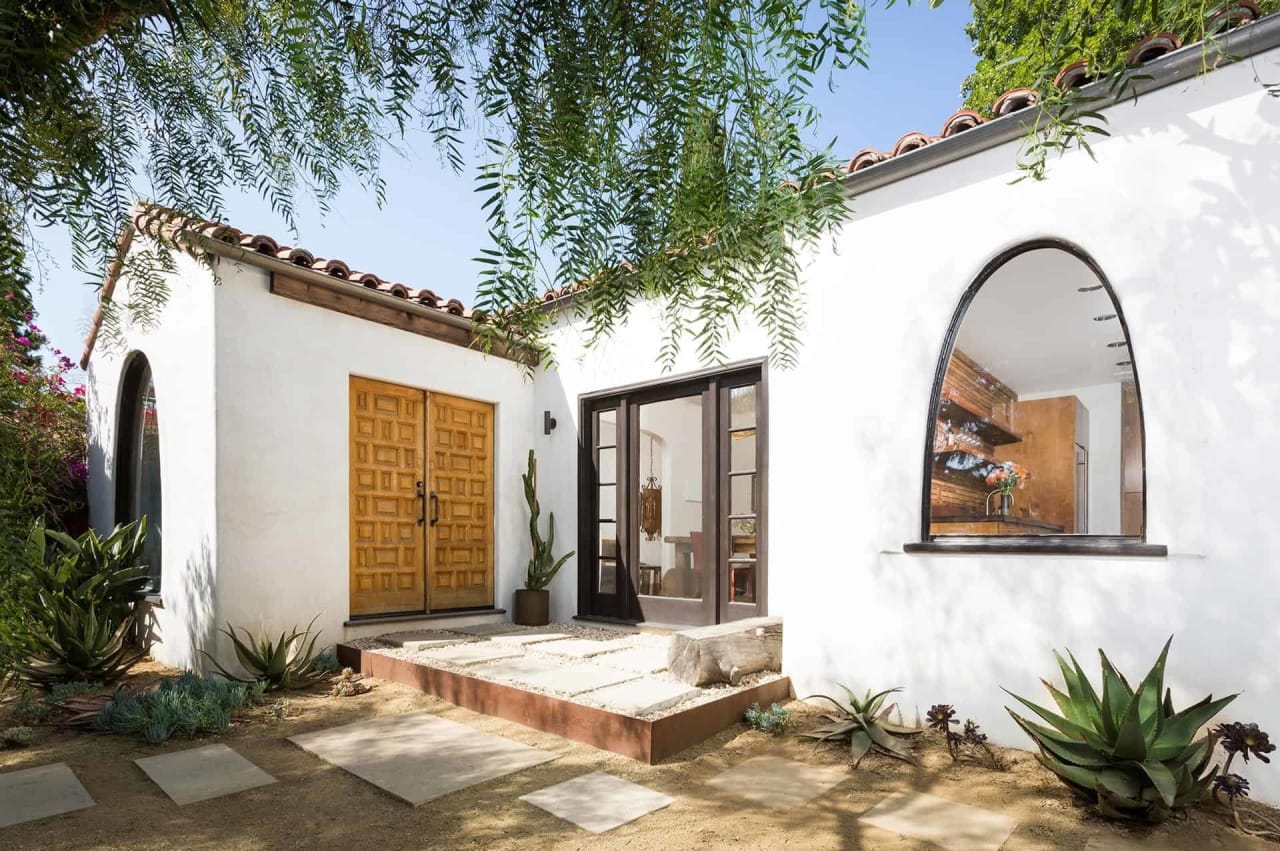
dppre May 29, 2015
Real Estate


By Annie Thornton
When designers Chris McCullough and Peggy Hsu bought this Spanish colonial bungalow, they wanted a project. In Mar Vista, a small community east of Venice Beach, Los Angeles, these homes sell quickly, so when they came upon a quaint fixer-upper with great natural light on a corner lot, they went for it.
To read full article click “Keep Reading” or visit their website here.
Houzz at a Glance
Who lives here: Peggy Hsu, Chris McCullough and Izzy Pop, their Wire Fox Terrier
Location: Mar Vista neighborhood of Los Angeles
Designer: Hsu McCullough
Size: Main house: 1,140 square feet (106 square meters); 2 bedrooms, 1½ bathrooms; detached garage: 350 square feet (33 square meters)
Year remodeled: 2007 to 2009; the landscape was finished in 2013
That’s interesting: When Hsu and McCullough were remodeling, they discovered a copy of the Los Angeles Times from 1930 in the walls.
The previous owner had been renting out the house since the 1980s. Hsu and McCullough stripped all evidence of that era in favor of more timeless updates. Structurally the house was in great shape, so it was a pretty straightforward remodel and demolition process.
The couple reused, repurposed and salvaged materials when they could. In addition to adding a worn-in richness, it saved them money. They bought things that weren’t in pristine condition and restored them. They also helped with the construction work.
The solid oak floors are original to the house. Carpeting covered them during the home’s rental years, preserving them fairly well. New flooring was pieced in where walls were moved, and all the floors were sanded and refinished for continuity.
The window seat off the kitchen is one of McCullough’s favorite spaces.
For example, McCullough wanted to completely open up the kitchen, dining and living areas to one another. Hsu wanted to keep the kitchen closed, as kitchens traditionally were closed off when the house was built, and to preserve the original scale of the rooms. They resolved this by creating a semitransparent wood wall panel between the kitchen and the dining room. Both rooms remain separate, but light and a hint of movement flow between the two spaces.
Much of the wood used in the project, including the wall in the kitchen, came from the framing of walls they removed. McCullough cleaned much of the salvaged wood framing and lath with a drill-powered wire wheel, revealing a warm and textured finish.
He suggests wood as a good material for anyone who wants to be crafty with a home improvement project. It is easy to manipulate, he says.
The dining room meets the other side of the wood partition. The light fixture above the dining table is a custom piece McCullough devised from a sycamore tree branch.
After the piece was wired by an electrician, he inserted five LEDs and a remote transformer into the branch. A black iron gas pipe and an old weight found during the remodel connect the fixture to the ceiling. McCullough says the whole thing probably cost around $300.
A similar story accompanies the dining benches. Again, McCullough came across a mature pine tree that had been cut down. The trunk had been nicely divided into 5-foot sections so that it could be fed into a chipper. After packing four trunk sections into his truck, McCullough found a contractor who specialized in log cabin homes to mill the trunks, planing the top and bottom sides of the trunk to create flat surfaces. He let them dry out in the shade for a year before bringing them back inside and adding casters to the bottom.
The dining table came from a now-closed store (Casa Sweet Casa); it was made from repurposed mesquite wood gates.
The living room sits just off the dining room. Hsu and McCullough bought the matching pair of lanterns at a salvage yard. A 20-foot-long wood handrail wrapped in sisal connects the lanterns to electrical wiring in the center of the ceiling.
Both the coffee table and side table are made from folded steel. The brass sandpiper wall sculpture is a 1960s Curtis Jeré piece they bought in Palm Springs, California.
McCullough created both art pieces in the master bedroom. On the right wall hangs “Cassette James Brown.” Most of the tapes came from a local thrift store that was going out of business. He mounted them onto a piece of plywood through the voids in the cassette wheels. The entire piece is attached to the wall by a French cleat.
On the left wall hangs an abstract world map piece that McCullough made using the original floor heater from the house. The continents were made using electrical wire connectors. The wood accent wall features more timber salvaged from the selective demolition of interior walls.
Stay up to date on the latest real estate trends.

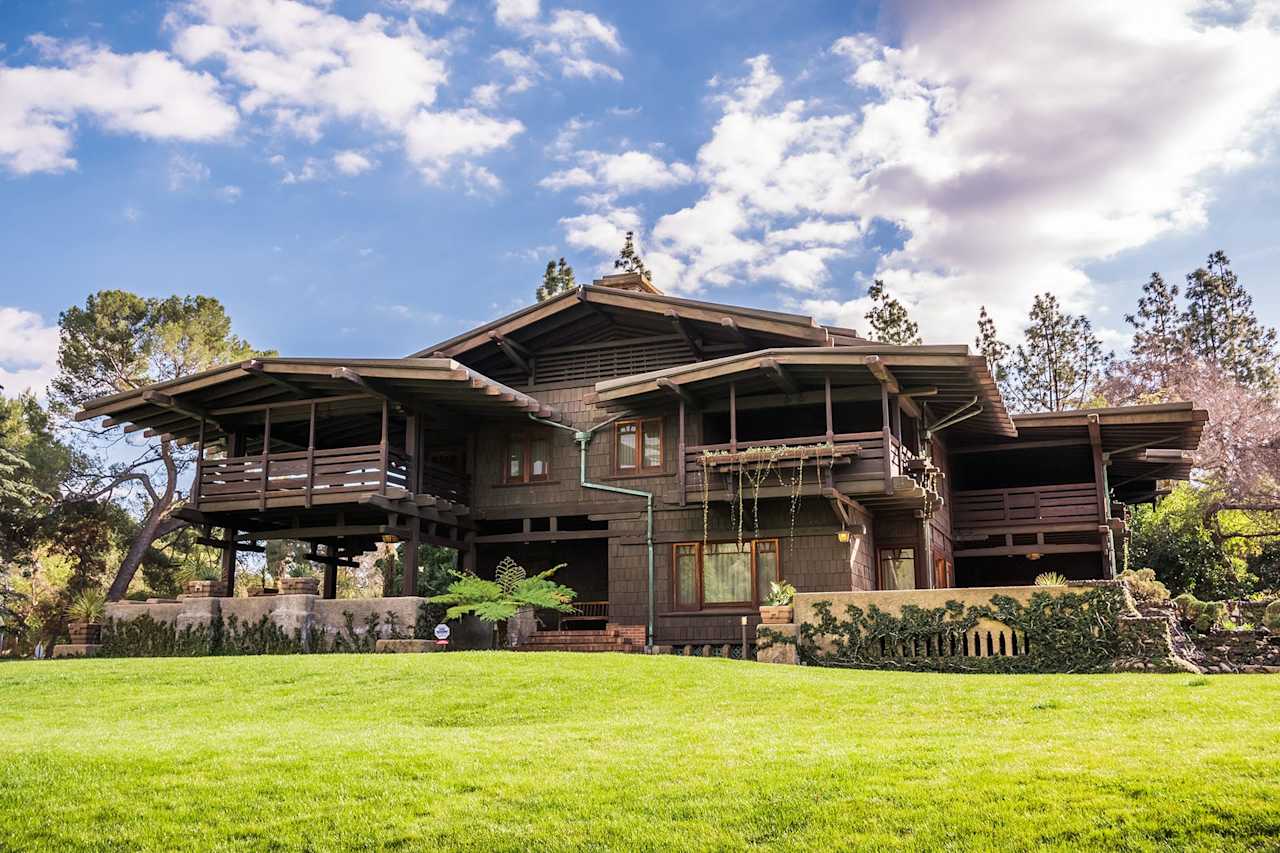
Preserving Heritage Through Meticulous Craftsmanship and Modern Living
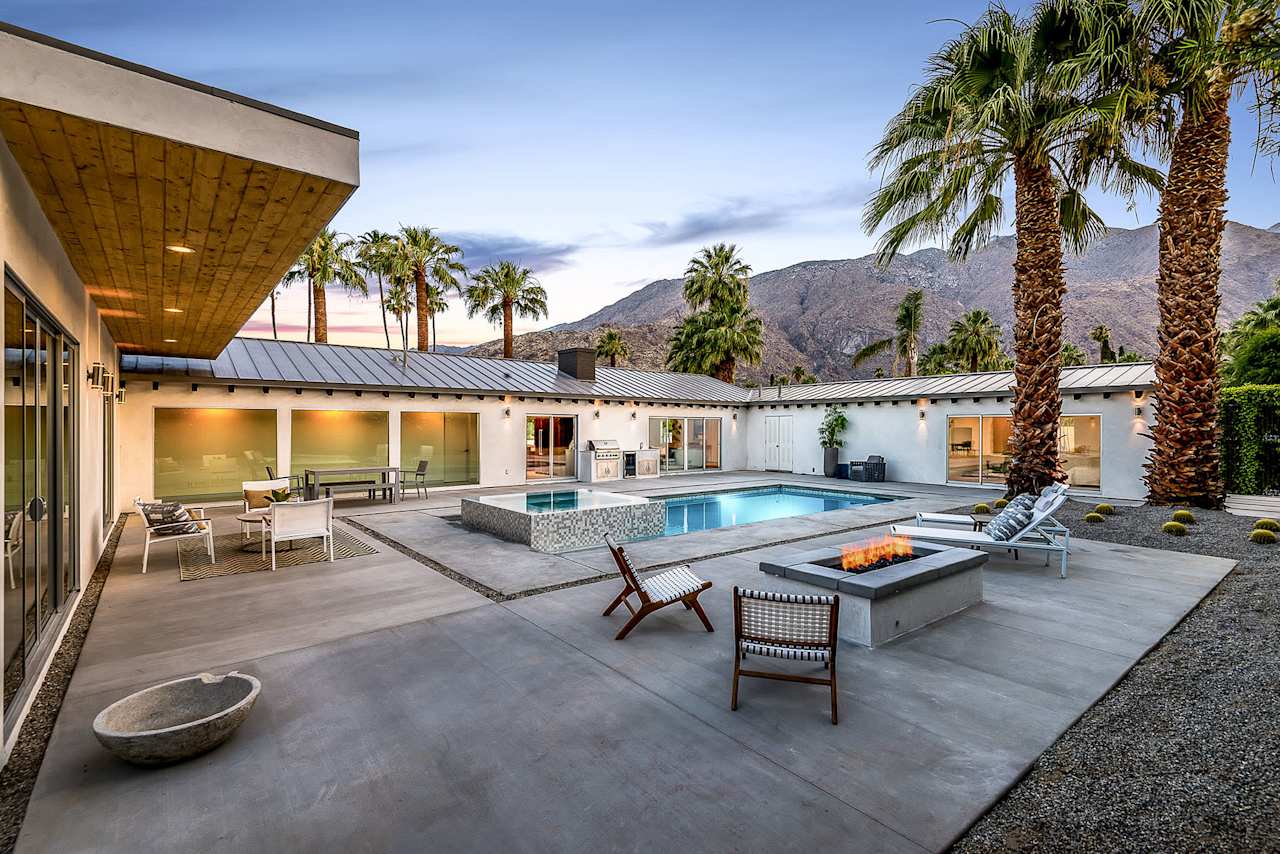
In Palm Springs, Architecture Meets Timeless Innovation
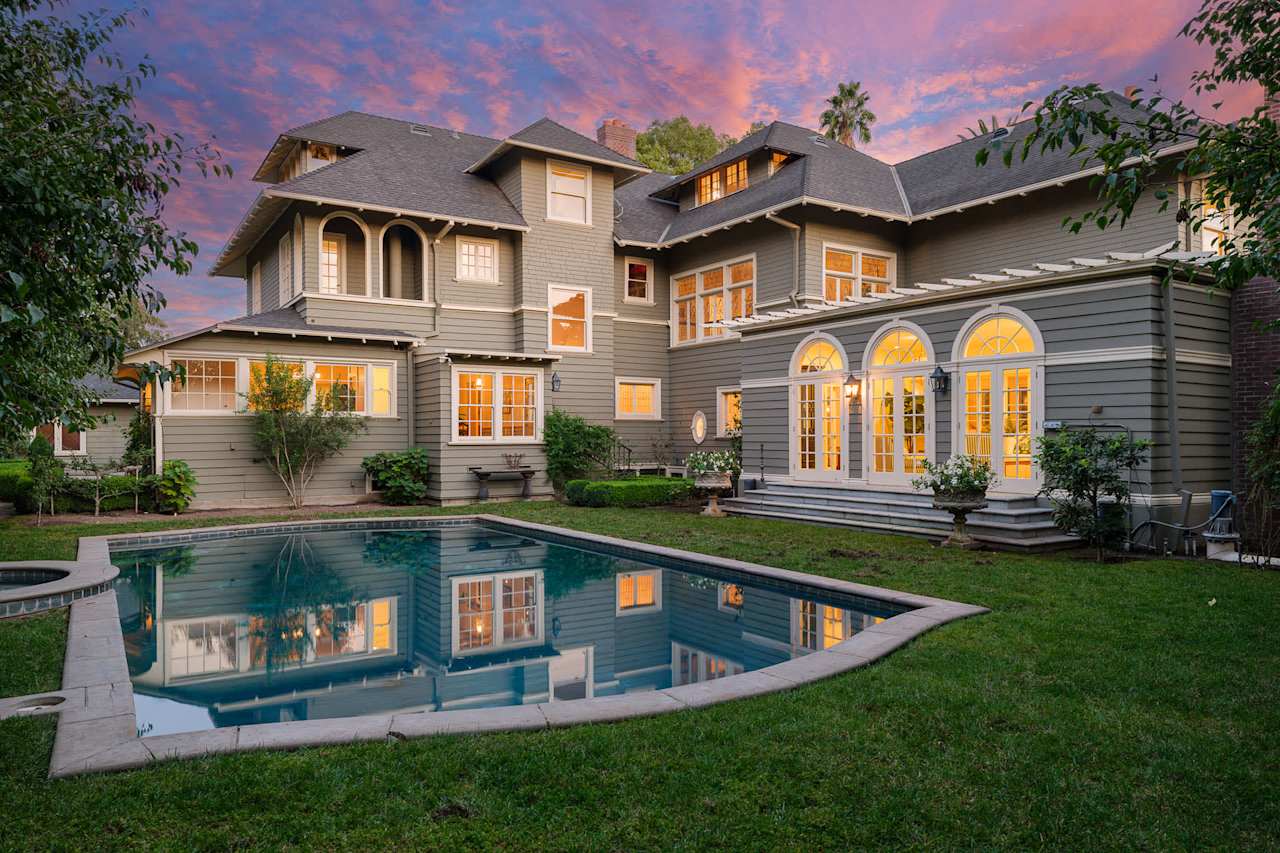
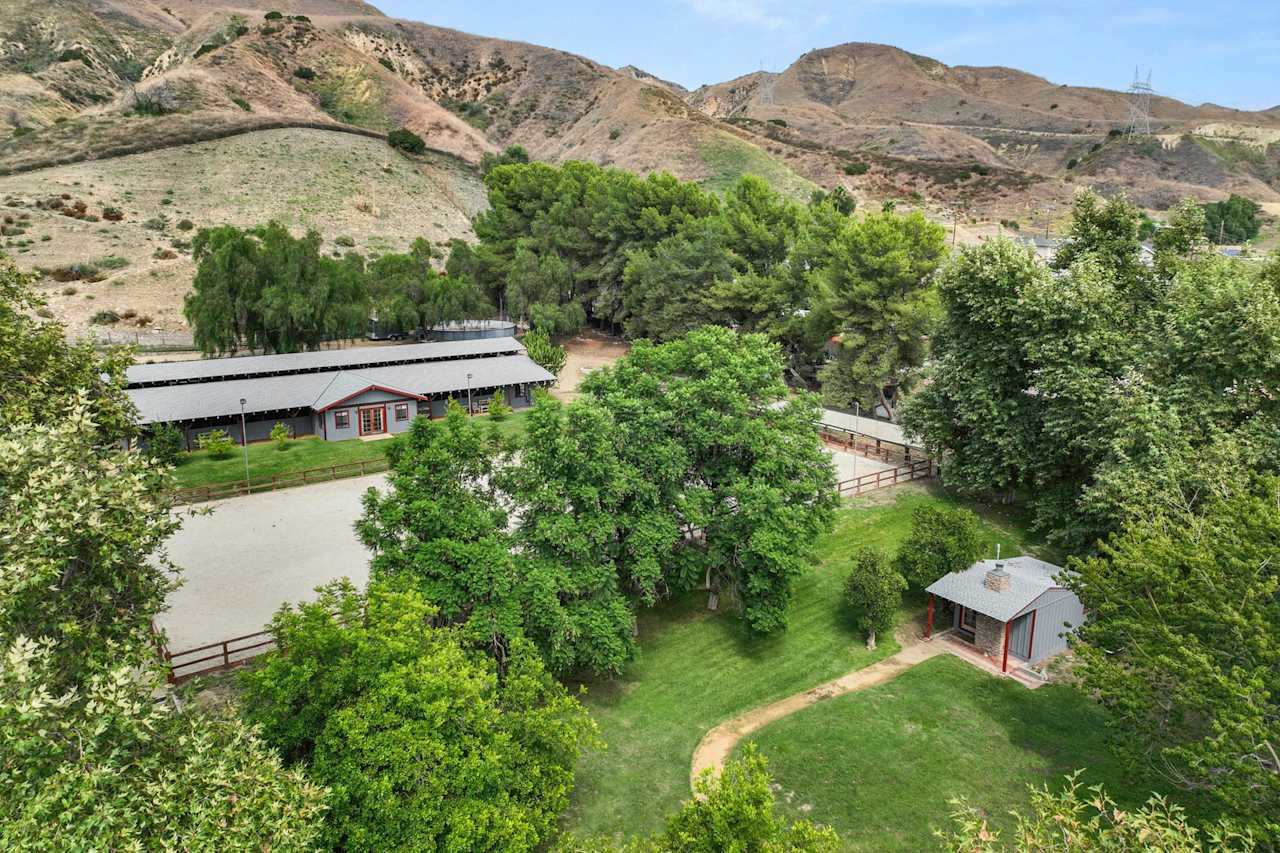
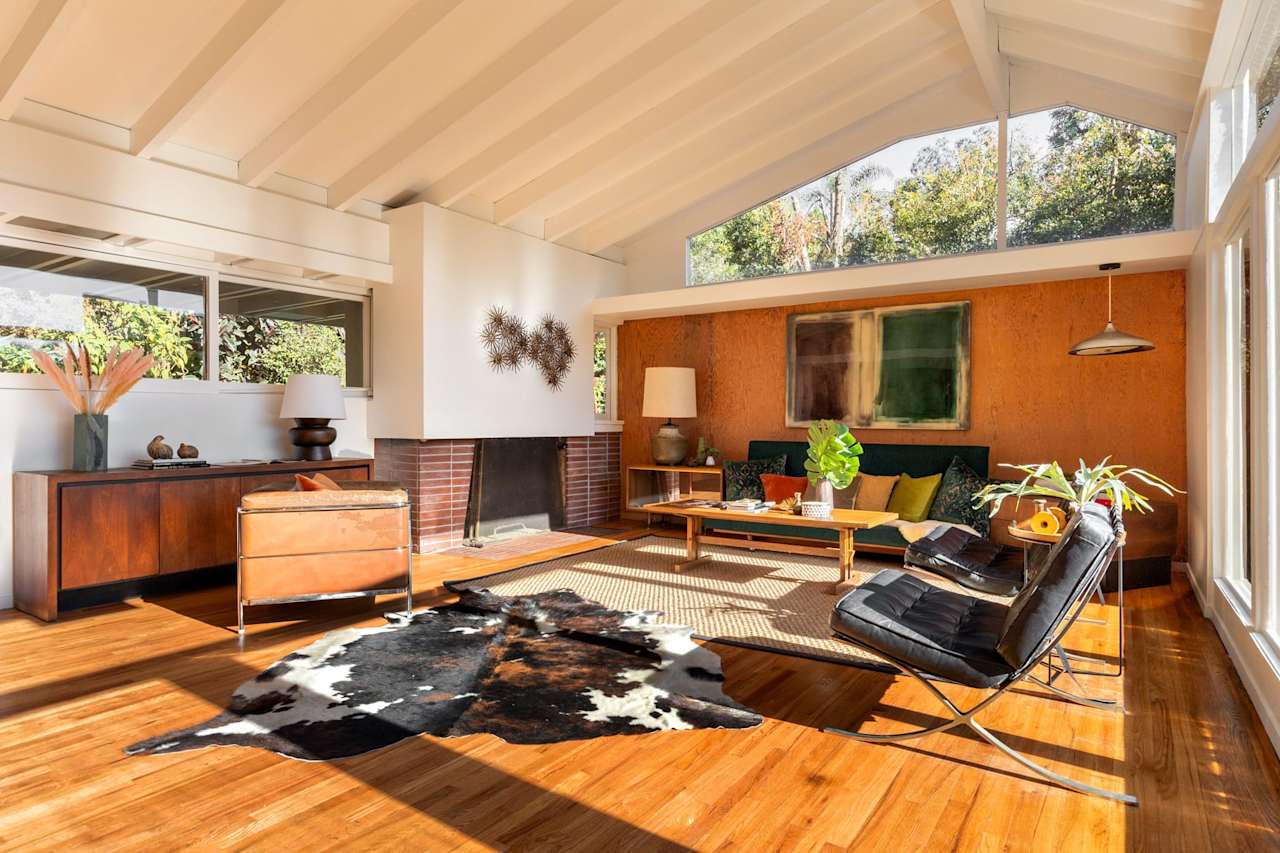
We are available to assist you with all your residential needs, please contact us.